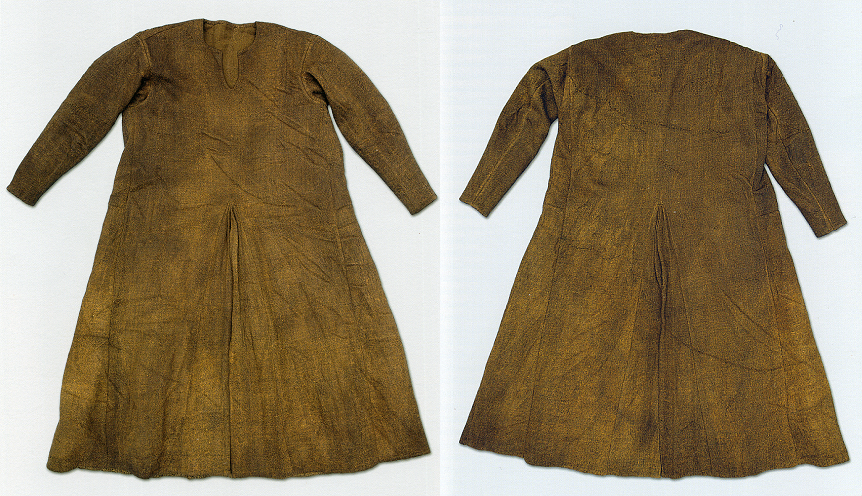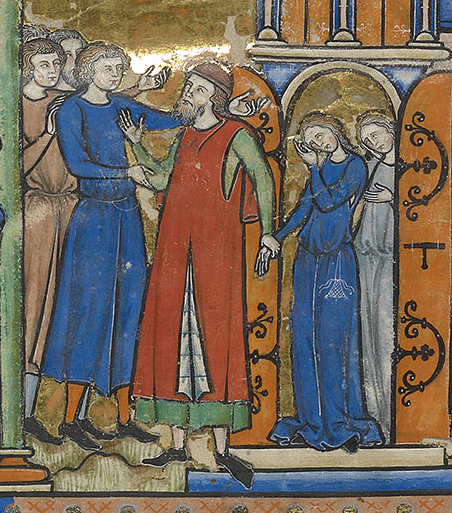Search the Blog
Latest Comments
Riding Slits, Part 1.
I wrote:
You need middle gores in the front and back to keep a riding slit closed when not in use (and there are no riding slits without gores in any archaeological find).
In the archaeological record, we have men's tunics both with and without a riding slit. What they have in common is the middle gore set into the front and the back.
The gore on its own would not provide enough room to sit astride a horse without the fabric riding up the legs, at least not in most cases. The Moselund tunic, for instance, is rather long, so it would have to be very, very wide for that to work. If you look at artwork from the Middle Ages, you will notice that the existence of the slit is made clear, but it's always "closed", as in there is no underwear shown.
The way we are shown that there is indeed a riding slit is rather ingenious: There is a vertical line, and because that is usually rather inconspicuous, often the edges of the lower part of the slit are shown turned outwards, with the lining of the garment clearly visible contrasting with the outer fabric. This is the case in the image above, where a fur lining is shown. The two men next to this man have simpler slit tunics, but you can also clearly tell they are slitted: the corners at the bottom of the slit overlap, and are slightly mis-aligned. The same goes for the green garment worn underneath the red fur-lined one on Main Guy.
A riding slit, for it to work properly, also has to be long enough. A lot of the modern interpretations in Living History have a slit cut in, but it does not reach up far enough - it has to come up to about crotch level, front and back, if you want to avoid bunching of the tunic. That, of course, is a problem if you do not have the middle gores set in, because a simple slit will inevitably stay open (especially if you hem the edges, which is the smart thing to do) and thus, if it's cut up far enough, expose your underwear. Which, back in time as today, was not something you'd usually go for.





